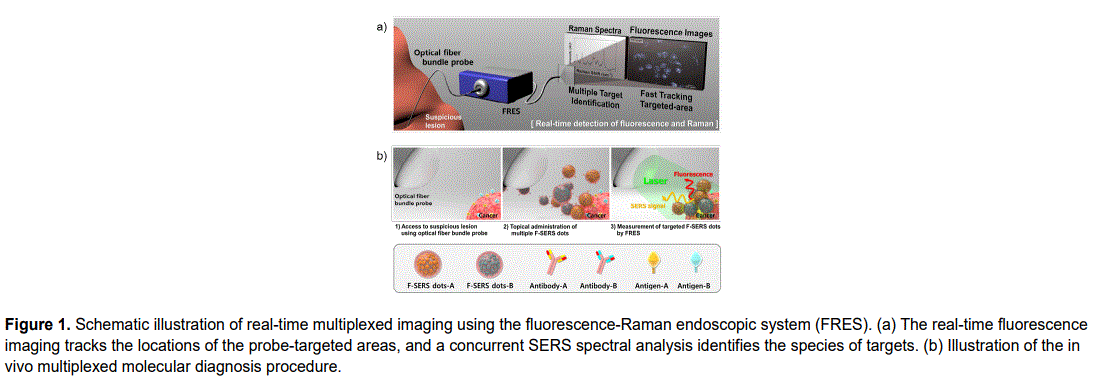International Nanotechnology Conference & Expo
April 04-06, 2016 | Baltimore, USA
Fluorescence-raman dual-modal endomicroscopic system for real-time in vivo multiplexed molecular diagnosis
1Department of Chemistry Education, Seoul National University, Korea
2Department of Nuclear Medicine, Seoul National University, Korea
3School of Chemical and Biological Engineering, Seoul National University, Korea
Endoscopic imaging techniques have been extensively used to diagnose and treat cancerssuch asesophageal, gastric, and colorectal cancersowing to their high accessibility to proximal surface of suspicious lesion with minimal invasive or non-invasive manner. However, by solely using a conventional white-light endoscopy, it is difficult to diagnose a specific cancer at an early stage and to differentiate stage of cancer, because it can only distinguish visually observable morphological changes. Thus, to accurately diagnose a specific cancer based on the pathological condition of suspiciouslesion at the molecular level, biopsy and histopathological examination of suspicious lesion are essentially required.
Recently, to improve the accuracy and reliability of endoscopic diagnosis by using the histopathological molecular information of suspicious lesion, additional functionalities such as fluorescence and Raman spectroscopy involving exogenous targeting agents have been combinedwith conventional endoscopy. The fluorescence endoscopic imaging techniques with fluorescently labeled molecular contrast agents can visualize a biotarget associated with a specific cancer that enhance differentiation between tumor and adjacent benign tissues. The Raman endoscopic techniques using surface-enhanced Raman scattering (SERS) nanoprobe as tumor targeting agents can simultaneously detect the multiple molecular biotargets with high sensitivity to identify the pathological condition of suspicious lesion for molecular diagnosis because of its narrow spectral band width (<1 nm) and single excitation source for multiple analytes.
Here, we developed a real-time fluorescence-Raman endomicroscopic system (FRES) with fluorescence-SERS active nanoprobes (F-SERS dots) having a targeting ligand with the following strategies for in vivo endoscopic molecular diagnostics: simultaneous detection of dual modalities (fluorescence and SERS signals) for real-time fluorescence molecular imaging of bio-targets and identification of multiple bio-targets by SERS spectra, and direct topical administration of F-SERS dots as tumor-targeting agents via direct spraying method to reduce the potential toxicity of nanoprobes caused by accumulating in the internal organs. To demonstrate the feasibility of the FRES as an in vivo endoscopic molecular diagnostic tool, human epidermal growth factor receptor 2 (HER2) and epidermal growth factor receptor (EGFR) on the breast cancer orthotopic xenograft tumor models in mice were successfully identified in a multiplexed way. Based on these results, we can believe that the FRES has asignificant potential as a clinical molecular diagnostic tool which enable us to characterize the tumor receptors in real-time at the molecular level during the routine endoscopic procedures.

Biography:
Sinyoung Jeong is a Ph.D. student at Department of Chemistry Education, Seoul National University, Koreaunder the supervision of Prof. Dae Hong Jeong. He is mainlystudyingRaman spectroscopy forbio-application. His current research is focusedon developing Surface Enhanced Raman Scattering-based in vivo and in vitro multi-modal bio-imaging system for multiplexed molecular diagnosisinvolving endoscopy and microscopy, in conjugation with multifunctional optical nanomaterialshaving specific targeting moiety. He has published 15 first-authored and co-authored peer-reviewed papers in the major journals including Advanced Functional Materials, Scientific Reports, and ACS Applied Materials. He received B.S. (2010) and M.S. (2012) from Department of Chemistry Education at Seoul National University


